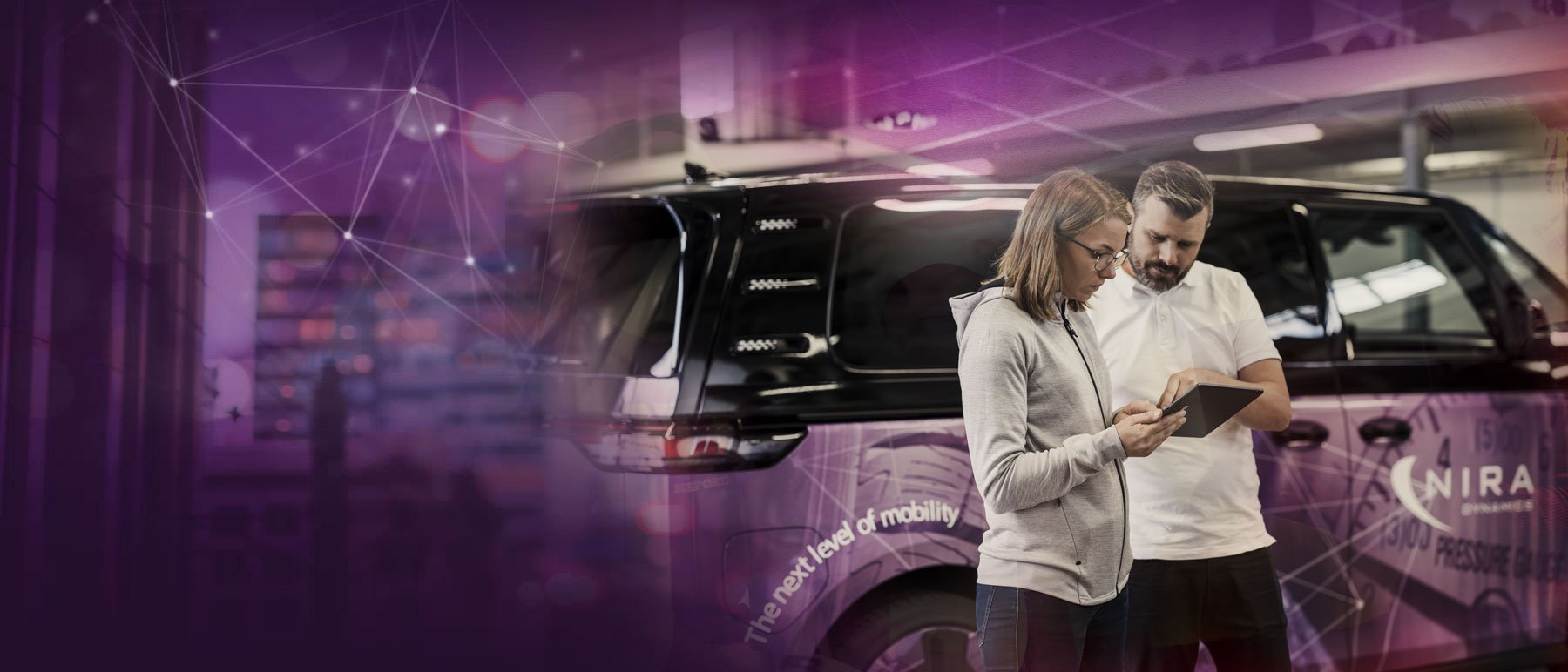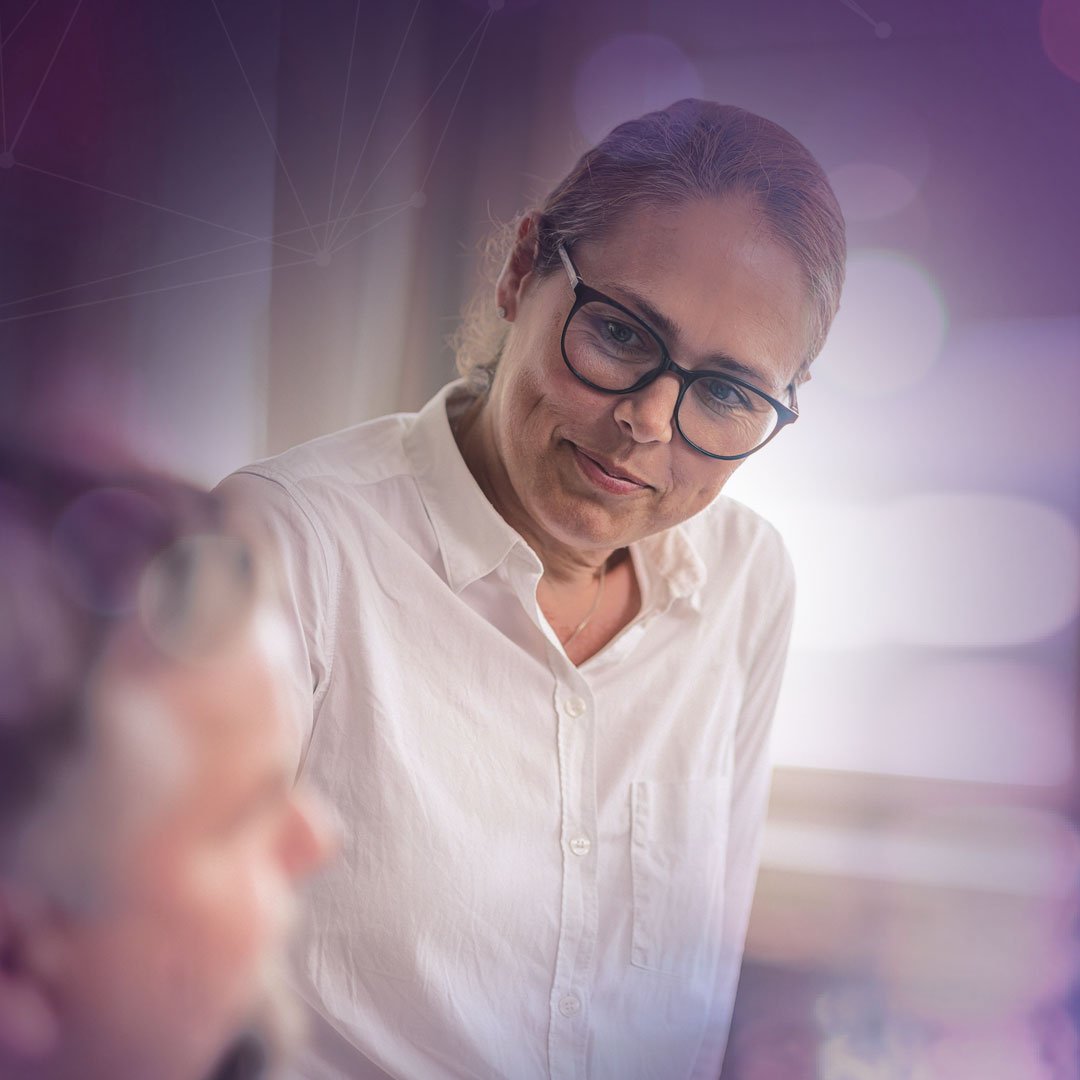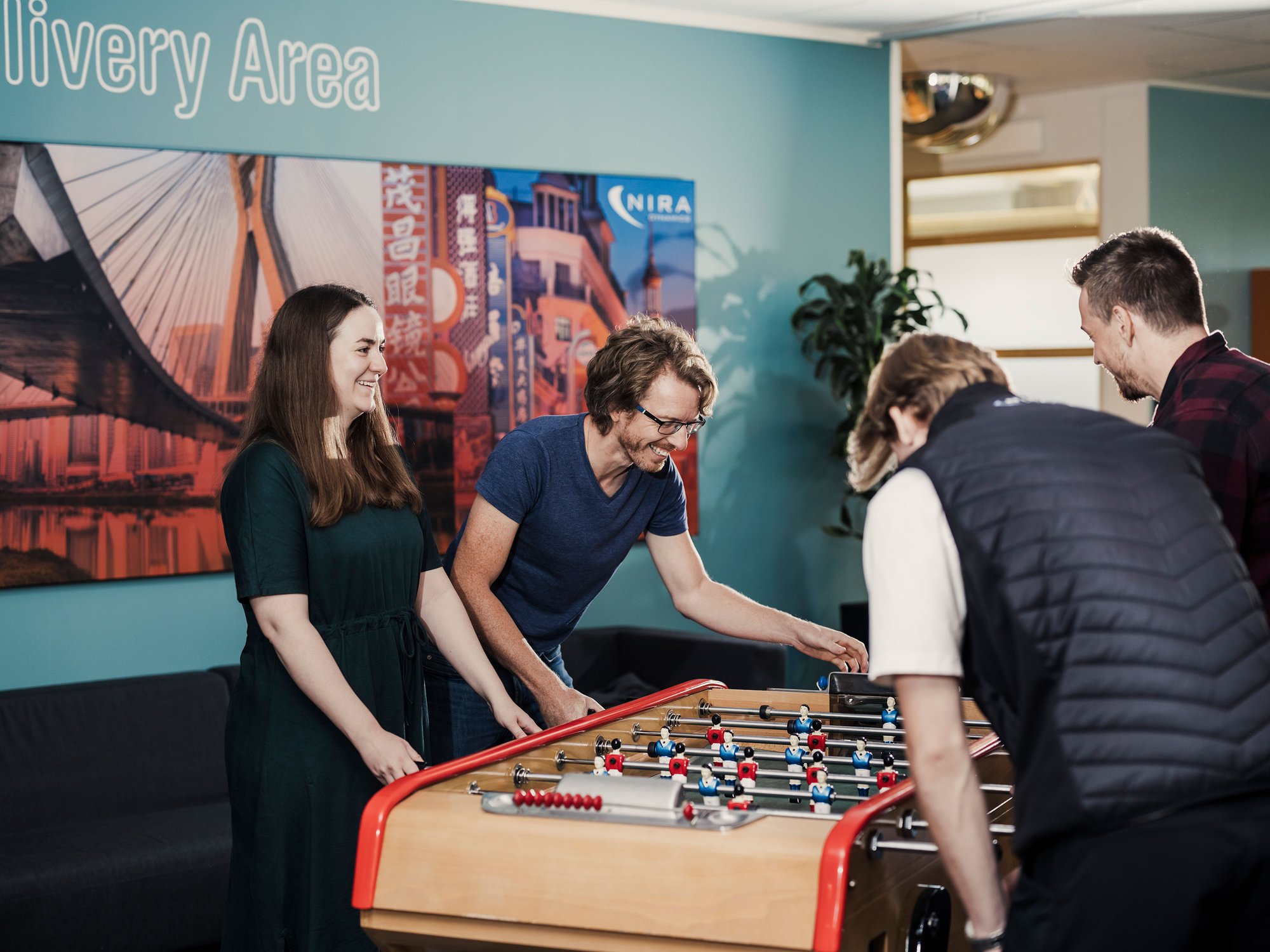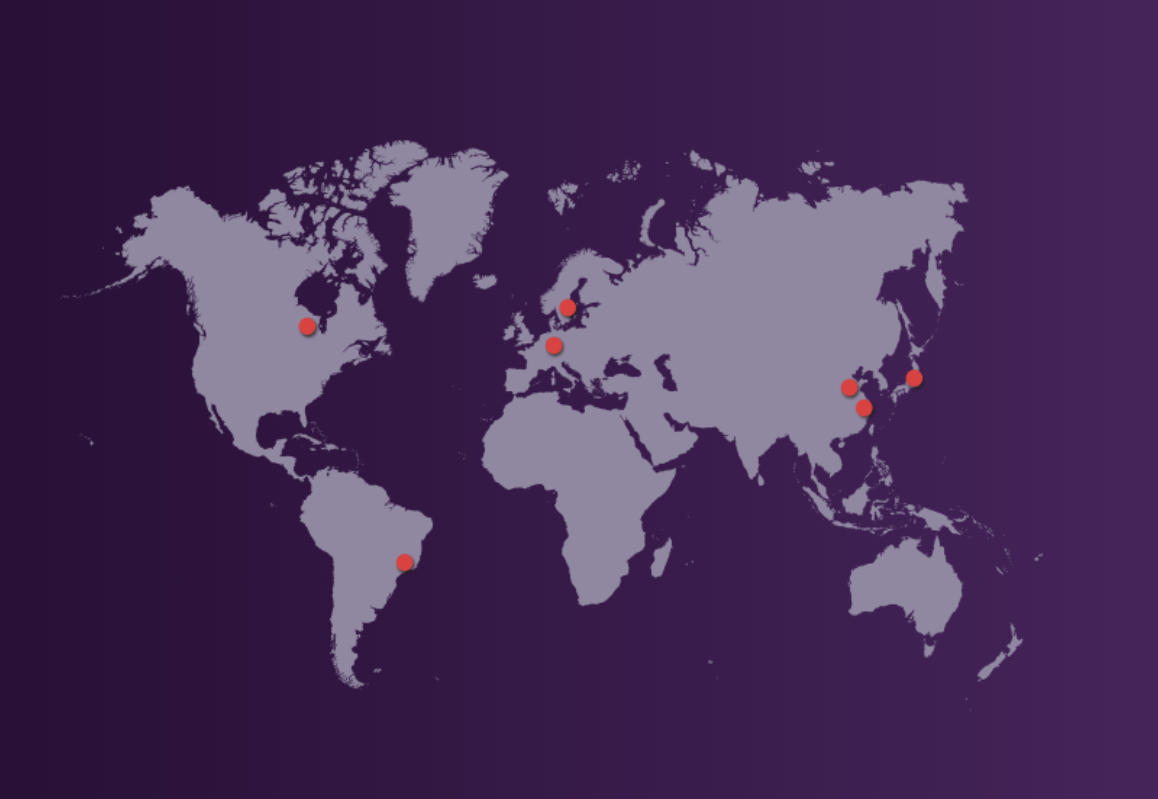Work at NIRA
What’s it like to be a part of NIRA? Well, here’s your chance to find out. On these pages we have tried to capture the essence of our culture – to give you an insight into life at NIRA.


Culture
You could see us as an innovative company doing things differently. But more than anything, we like to think of NIRA as a bunch of great people. Because in the end, isn’t that what it’s all about? Working with great people. That means always having someone to share ideas with, sometimes disagree with, get inspired by.
One thing’s for certain: working is a big part of life, and we want you to make the most of it. Because once you enter the doors of NIRA, you become part of something different we take a lot of pride in, and that has always been instrumental to our success - our culture.











“Since I joined NIRA, I haven’t worked a single day. That’s what it feels like, at least – thanks to the ever-exciting challenge and my amazing colleagues.”
Culture, of course, is not very easily described in just a few words. Rather, it’s something you feel. And if it’s one thing that we want you to feel at NIRA, it’s that you are here for a reason. So it probably goes without saying that as part of the NIRA team, your opinion is highly valued. And we appreciate you for who you are.
Our Core Values
Our company culture consists of the core values and value-driven actions that together form the basis for our actions towards customers and other stakeholders, as well as the attitudes we show towards each other in our daily work.
- Easy to be a NIRA customer
Ensuring customer satisfaction is our top priority. That means anything from being there whenever the customer needs us, to being open to feedback and able to adapt to changing conditions. We always strive to exceed expectations and, of course, we deliver on time. - Nothing is impossible
At NIRA, we feel challenged by the ”impossible”. With fast decision making and excellent communication between our teams, we succeed i translating creative ideas into innovative solutions. When the challenges pile up and it all seems impossible, we gather our collective strength and solve them together. Our innovations are world-leading, we do not give up in adversity but have perseverance in our development work.
- A fun time together
Working at NIRA should be a rewarding experience, where we have fun together. And whether ‘fun’ means solving a customer problem, brainstorming ideas or hanging out at an after-work event, the real keyword is ‘together’.
We support each other as a team, and that’s what makes us successful. And we do that in an easygoing way, being part of a transparent and informal organization where everyone’s opinion matters. - Straight-forward attitude
When you believe in teamwork, like we do, communication is key. That means for instance being open and honest, listening to understand, and being able to provide and deal with feedback in a constructive way.
Work-life balance
is more than just a fancy word
Work – is it a place or is it something you do? To us at NIRA, the answer is obvious. So obvious that we let you choose for yourself where and when you work. That means no more nine to five (unless that’s what you prefer, of course). You decide. The main thing is this: as long as you meet your deadlines, and cooperate efficiently with your co-workers, you’re free to do your work wherever and whenever it suits you best. Because in the end, it’s about what you achieve – and a way of working that enables your lifestyle.


Success is a team effort
WELLBEING
We care – 24/7
Obviously, a rich personal life enables an outstanding performance. The right work-life balance will keep you at your best, take a look at our healthcare package, and you’ll see what we mean.
- Optional healthcare insurance, including e-healthcare
- Financial security in case of a prolonged sick leave
- Wellness grant and training clothes
- A great variety of activities organized by our Culture Club.


PEOPLE
Great people.
In growing numbers.
What’s the best thing about working at NIRA? Perhaps it’s working with great people. People with different skillsets, backgrounds and interests, but with one common trait: they all strongly believe in our strategy and our values. That makes for diverse and highly autonomous teams – which is one of the key factors behind our success.

We are expanding. Currently, we have 130 employees.

With our dedicated consultants, we are close to 170.

Average age of 38 years. 19% female co-workers.

Family firendly Workplace – a lot of parents @work.
BENEFITS
Be your best. You’ll be greatly rewarded.
At NIRA we believe that we all have the power to make a difference. Experience is great of course, but it’s your skills and passion that we value the most. Above all, we believe that true success is a team effort. If you grow, the team grows – it’s as simple as that. And in the end, it’s a team called NIRA. As an employee at NIRA, you can expect:
- Market-competitive salary
- Wellness contribution 5000 SEK
- Up to six months partially paid parental leave
- A yearly bonus system
- High level of flexibility to choose when and where to work
- A generous occupational pension program


An exciting journey
Whether you’re working from our headquarters in Sweden or from any of our partner offices, being part of NIRA should always be an exciting journey. A journey towards professional growth. Now, whether that means moving through different roles, becoming a leader or honing your skills as a specialist is of course entirely up to you. There are many paths to choose from, and whichever one is right for you, one thing is for certain. At NIRA, you’re a vital part of an agile organization with a global impact – meaning your work can make a world of difference.
The only one we expect you to be is yourself
There may be a lot of things you’ve got to do during your workday. But at NIRA, at least, there’s only one thing you’ve got to be. That is yourself. Be the amazing person we know you are – because that’s why we hired you.
At NIRA, while we all share the same values, we’re all different. And it’s that unique combination of personalities and skills that makes us what we are. Diversity is a great thing. It’s also what usually happens when you hire the right person for the job. Whoever that may be.


SUSTAINABILITY
Doing great by doing good
At NIRA, a place that’s set on making a difference to its staff, to society and to our planet, sustainability is of course one of the most important questions. It’s at the very heart of what we do and what we believe we can achieve through our innovations.
What we do today will save lives – and our environment – tomorrow. This is why safety and sustainability are integral to our strategy. It’s why we actively opt out of activities that don’t contribute to this end. It’s why we so relentlessly stay on the very path we set out on so many years ago: The path of innovation. Towards the next level of mobility.